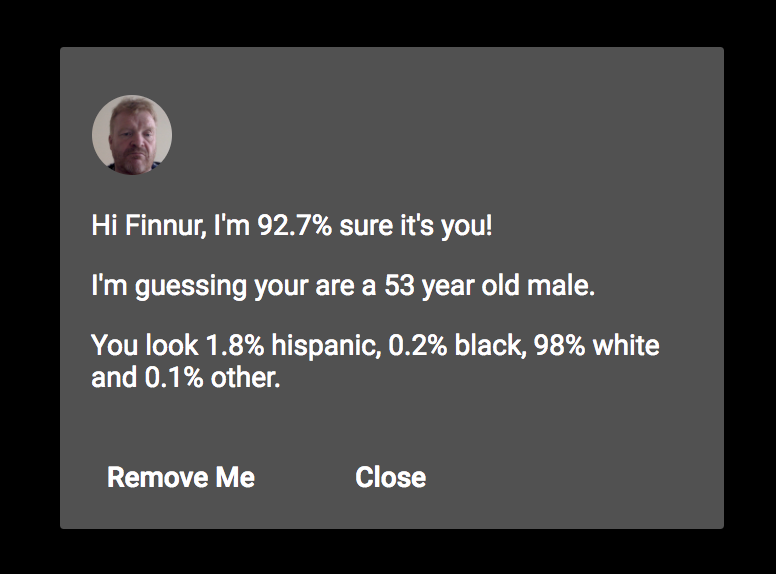on
Who's Who
The most interesting visual feature of the Universe are our faces. Anything else of interest has a diminishing return. A landscape, artwork or architecture can provide initial awe but eventually the novelty wears off and it becomes the norm. A face however is constantly changing with short term emotional expressions and long term ageing – and it has the Universe’s biggest mystery behind it, the grey matter.
For the past few weeks I’ve been tinkering with face recognition api from Kairos.

I’ve published my Who’s Who app on Github, you can Click Here to try it out. It runs in all up-to-date browsers and requires camera. IE is not supported and latest version of Safari is required. It’s interesting that in all the recent fanfare about iPhone 8/X, an update to Safari was quietly released this month that enables it to run what’s called WebRTC – which brings it inline with other modern browsers. So if your iPhone, iPad or Mac is complaining that camera is not available, make sure you got Safari 11.
Initially you need to enrol with a name and then Kairos will make some guesses based on your face, including sex, age and ethnicity. And then you can test how good it is at recognising you again.
Who’s Who is using my free developer’s account at Kairos which is limited to 25 transactions a minute – which should be fine unless it goes viral. And your face and name is safe with me – unless someone like Google offers me a lot of money. But you can always remove yourself, provided you can be recognised.
The Kairos api is not going to replace secure authentication, unlike Apple’s new facial recognition. To start with it’s designed to recognise faces from an image, which means that that it can’t tell if the camera is taking a picture of a face, or a picture of a picture of a face.
But that doesn’t mean it can’t be used for authentication. It could for example be used by a stationary tablet that records attendants.
The other interesting thing about this technology is the evolution of software for image processing. With every handheld smart-device now equipped with camera, it makes sense to take advantage of it as an input device. Specially when more complex processing like face recognition can be handled in the cloud.